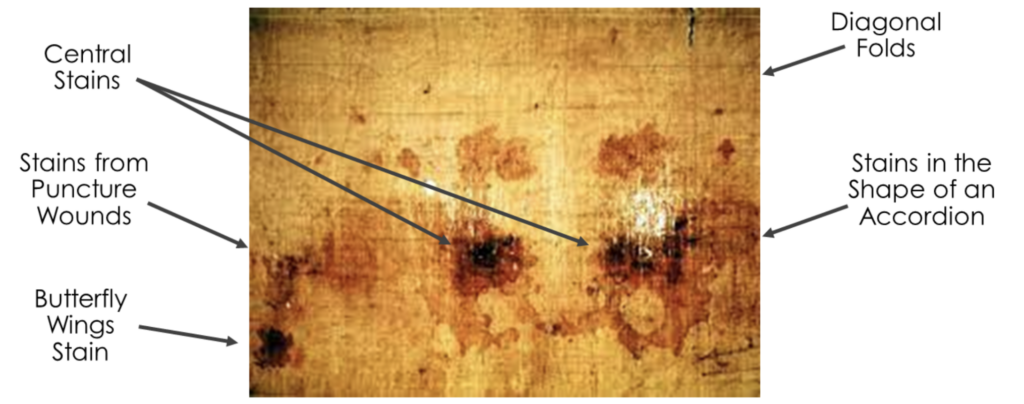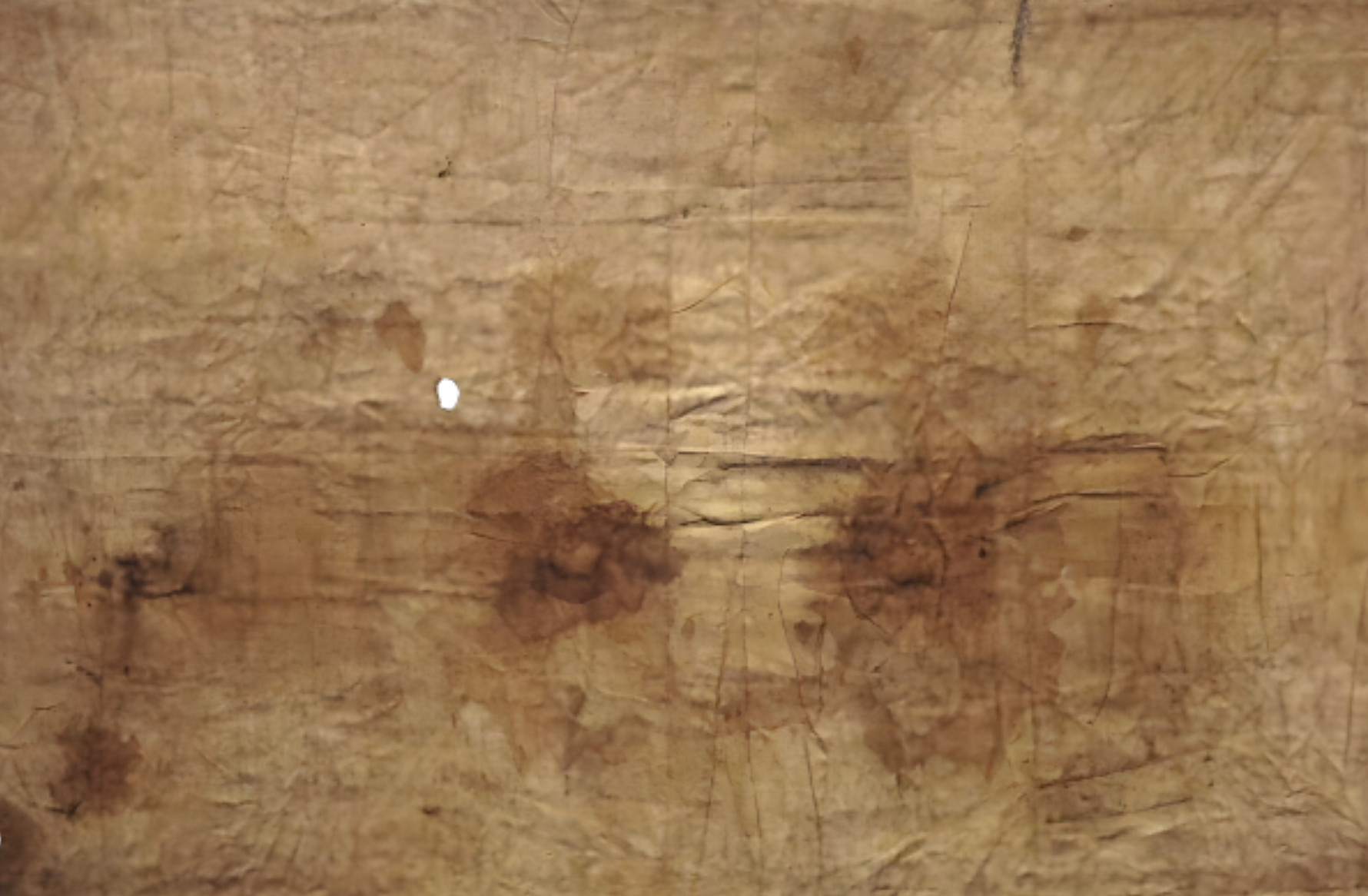The Sudarium of Oviedo is a woven linen cloth measuring approximately 33 x 21 inches (84 x 53 cms). It is covered with bloodstains and pleural fluid but does not contain an image.
While Jesus was still on the cross, his face was likely covered with a handkerchief known as a sudarium. This was done to preserve the dignity of the deceased.
Since the sudarium contained Jesus’s post-mortem blood and pleural fluid, it was carefully folded and buried along with the body, according to Jewish custom. The Gospel of John records that when Peter and John came to the empty tomb, they saw this “face cloth, which had been on Jesus’s head, not lying with the linen cloths but folded up in a place by itself.” (John 20:6)
The Sudarium of Oviedo is believed to be this face cloth.
The Sudarium Bloodstains Align with the Shroud
When the bloodstains on the Sudarium of Oviedo are compared with the bloodstains on the face of the man on the Shroud, they line up almost perfectly.
Forensic analysts have compared the bloodstains on the Shroud and the Sudarium. Their findings:
- Both cloths covered the same head within a short period of timeBoth cloths have Type AB bloodstains
- The Sudarium wason the man’s head while he was in a vertical position (presumably while still hanging on the cross)

A 1999 study by the Spanish Center for Sindonology investigated the relationship between the two cloths. Based on history, forensic pathology, blood chemistry, and the congruency of the bloodstain patterns, they concluded the two cloths covered the same head at two close but distinct moments of time.
Other Evidence Supports the Connection
Both the Sudarium and the Shroud have:
- Calcium dust at the tip of the nose
- Pleural fluid stains that match exactly
- Dust with strontium levels that indicate the cloths were in Jerusalem at the same time
Where is the Sudarium Now?
The Sudarium has been preserved in the Cathedral of Ovideo, Spain since the eighth century. It is displayed twice a year – on its Feast Day of September 14 and again eight days later on the octave.
The Sudarium’s existence and presence in Spain is well documented since the early seventh century (around 611 AD). Before this, there is historical evidence that traces the location of the Sudarium to Jerusalem since the first century AD.
Take Away
In Jewish custom, a folded napkin left behind at a meal indicated the master intended to return. Could John be referencing this custom by adding the detail of the “folded napkin” to his account of the discovery of the burial cloths on Easter morning?



